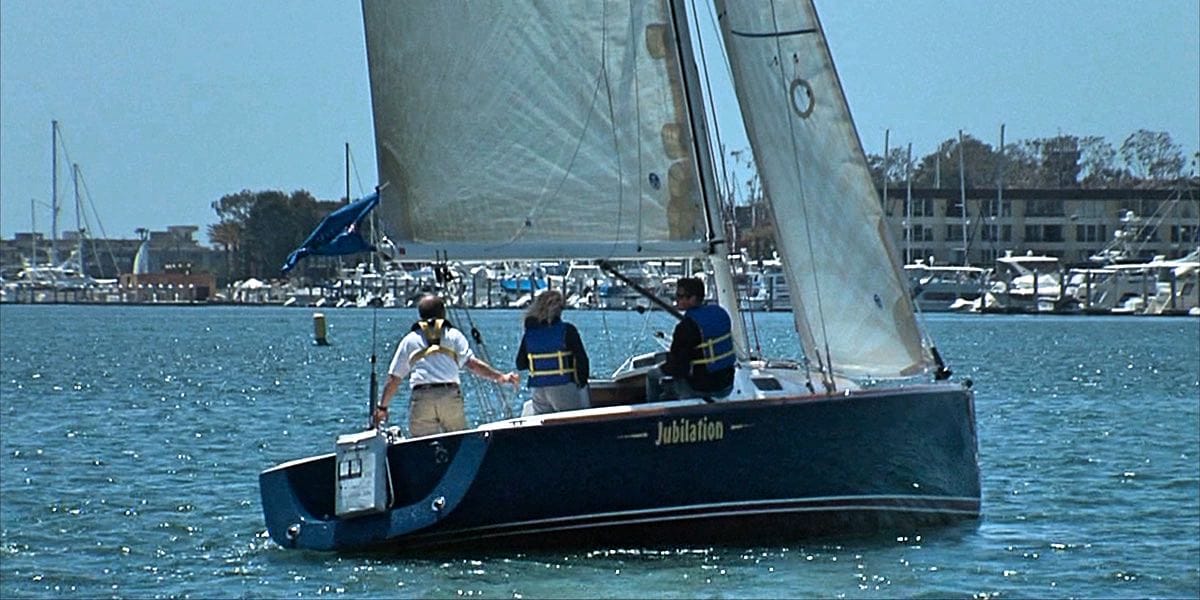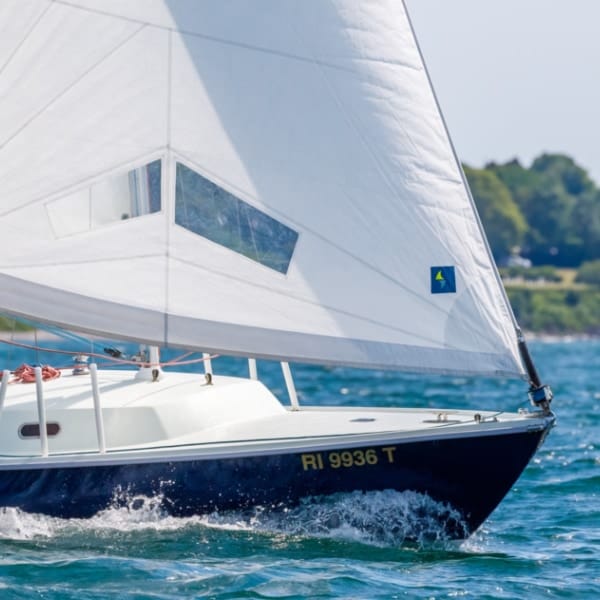“Heaving-to” is a classic technique employed to endure severe weather conditions while at sea. Heaving-to is an essential skill for all mariners, as it proves valuable in various situations. This maneuver allows you to delay your arrival at a port until more favorable light or tide conditions prevail or simply “park” the boat while attending to necessary repairs.
When a vessel is hove-to, it positions itself with the wind coming from just forward of the beam, causing it to drift gradually sideways and slightly forward. The wind’s force on the sails maintains a steady angle of heel, ensuring relatively gentle motion, even when facing significant waves.
To execute the heaving-to maneuver, you configure the sails in opposition, causing the jib to exert force in one direction and the mainsail in the opposite direction. The rudder is employed to control the boat’s course.
Here’s a step-by-step guide for heaving-to:
- Observe the wind’s direction and determine the desired drift direction. Decide whether you want to be on the port or starboard tack.
- To lie on the tack opposite to your current one, tighten the jib sheet, tack, and leave the jib sheet cleated.
- As the boat approaches head-to-wind, the windward sheet will set the jib aback, pushing the bow downwind. Keep the mainsheet on the winch with the clutch open.
- Steer the boat back towards the wind and make adjustments with the helm and mainsheet until the boat maintains a steady position relative to the wind on a close-reaching heading. Typically, you’ll turn the wheel to the windward side. The mainsail may or may not require luffing.
- Secure the wheel in place to prevent movement, but ensure it can be easily released if necessary.
- Continuously adjust the sheets and helm as needed to maintain the boat’s attitude, all while maintaining a vigilant lookout for potential hazards.

When and Why to Heave To?
Heaving-to is a versatile sailing maneuver that can be employed for safety, comfort, and strategic purposes in a variety of sailing conditions and situations. It’s an essential skill for sailors to have in their toolkit, especially when cruising in challenging environments or undertaking long passages.
There are several scenarios and reasons why you might choose to heave-to in a sailboat.
Heavy Weather: One of the primary reasons for heaving-to is to ride out heavy weather conditions at sea. When the wind and waves become too strong and dangerous to continue sailing or navigating comfortably, heaving-to allows the boat to maintain a stable position relative to the wind and waves, reducing the risk of capsizing or taking on excessive water.
Safety and Rest: Heaving-to can provide a more comfortable and stable platform for the crew in rough conditions. It allows the crew to rest, tend to injuries, or address equipment problems without the constant motion and stress of sailing in heavy seas.
Reducing Speed: Sometimes, you might want to slow down or delay your arrival at a destination. Heaving-to can effectively slow the boat’s forward progress, allowing you to wait for more favorable weather, tide, or daylight conditions before proceeding.
Navigation and Position Fixing: In certain situations, heaving-to can be used for navigation purposes. It can help you maintain your position in a specific area, wait for a tide change, or assess your location when landmarks or navigation aids are unclear.
Maneuvering Space: If you need to give way to another vessel or avoid a navigational hazard, heaving-to can provide a controlled way to stop or slow down your boat while maintaining some degree of control and maneuverability.
Emergency Situations: In emergency situations, such as a crewmember falling overboard, heaving-to can create a stable platform from which to conduct rescue operations. It reduces the boat’s drift and makes it easier to recover a person from the water.
Single-Handed Sailing: For single-handed sailors, heaving-to can be a useful technique to pause the boat and attend to tasks like reefing sails, making adjustments, or taking a break when there is no other crew available to assist.











